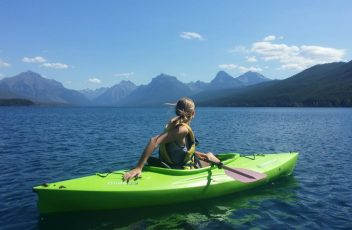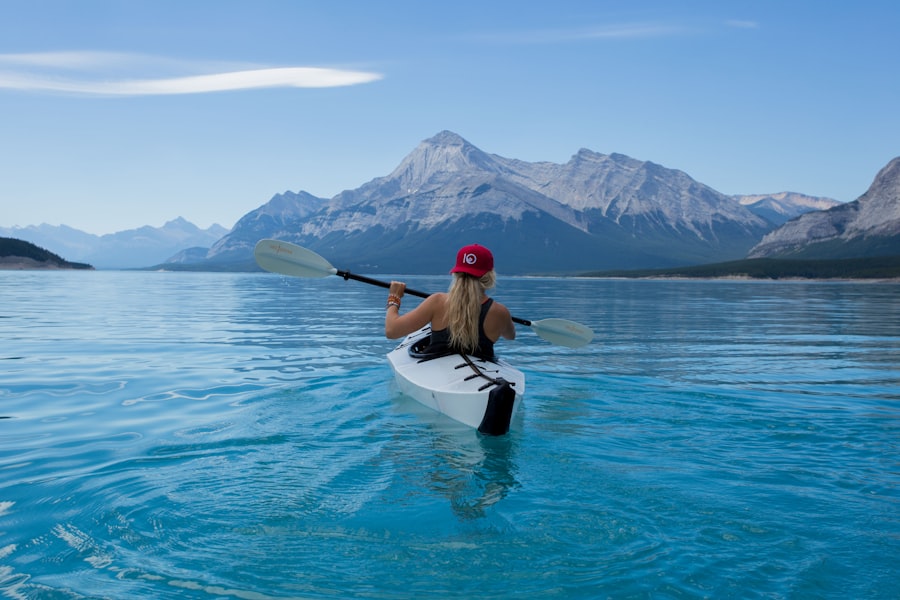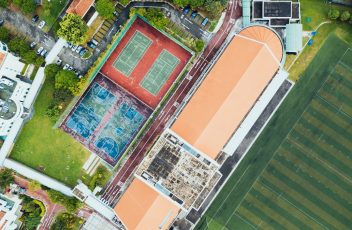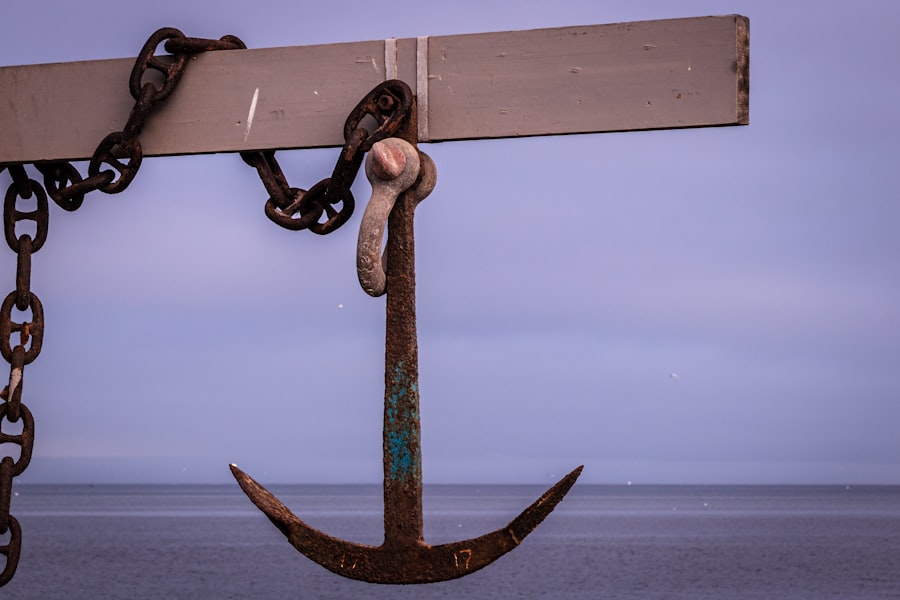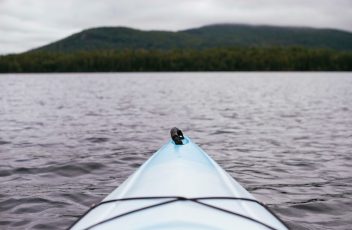Kayaking is a popular outdoor activity that allows individuals to explore the beauty of nature while enjoying a peaceful and serene experience on the water. While kayaking during the day can be a wonderful experience, there is something truly magical about paddling under the stars and experiencing the tranquility of the night. Nighttime kayaking offers a unique adventure and allows paddlers to witness the beauty of nature in a whole new light.
Key Takeaways
- Kayaking in the dark without proper lighting can be dangerous and increase the risk of accidents.
- Nighttime kayak lights are essential for safety and visibility while paddling in low-light conditions.
- Different types of kayak lights serve different functions, such as navigation, visibility, and signaling.
- When choosing kayak lights for nighttime paddling, consider factors such as brightness, battery life, and durability.
- Regulations and requirements for kayak lights at night vary by location and should be followed to avoid fines or accidents.
The Risks of Kayaking in the Dark Without Proper Lighting
While nighttime kayaking can be an exhilarating experience, it is important to recognize the risks involved in paddling in the dark without proper lighting. Without adequate lighting, kayakers are at an increased risk of accidents and injuries.
A. Reduced visibility
One of the main risks of kayaking in the dark is reduced visibility. Without proper lighting, it can be difficult for kayakers to see obstacles in the water, such as rocks, logs, or other watercraft. This can lead to collisions and accidents, putting both the kayaker and others at risk.
B. Increased risk of accidents
In addition to reduced visibility, kayaking in the dark without proper lighting increases the risk of accidents. Without lights to signal their presence, kayakers may not be visible to other boaters or watercraft, increasing the chances of collisions. This can be especially dangerous in areas with heavy boat traffic or in low-light conditions.
The Importance of Nighttime Kayak Lights for Safety
To ensure safety while kayaking at night, it is crucial to have proper lighting on your kayak. Nighttime kayak lights not only increase visibility but also enhance overall safety on the water.
A. Increased visibility
The primary function of kayak lights is to increase visibility for both the kayaker and others on the water. Navigation lights, deck lights, and headlamps all serve this purpose by illuminating the surrounding area and making the kayak more visible to others. This helps to prevent accidents and ensures that other boaters can see and avoid the kayak.
B. Enhanced safety
In addition to increased visibility, nighttime kayak lights also enhance overall safety on the water. By having proper lighting, kayakers can easily navigate through obstacles and avoid potential hazards. This reduces the risk of accidents and injuries, allowing paddlers to enjoy their nighttime kayaking adventures with peace of mind.
Different Types of Kayak Lights and Their Functions
| Type of Kayak Light | Function |
|---|---|
| Navigation Lights | Used to signal the direction of the kayak to other boats and to help the kayaker navigate in low-light conditions. |
| Deck Lights | Provide illumination on the kayak’s deck, making it easier to see equipment and gear and to navigate in low-light conditions. |
| Spotlights | Used to illuminate a specific area or object, such as a fishing spot or a landing area. |
| Strobe Lights | Used as a distress signal to attract attention in emergency situations. |
| Underwater Lights | Used to attract fish and other marine life, as well as to provide a unique and visually appealing experience for the kayaker. |
There are several different types of kayak lights available, each serving a specific function to enhance visibility and safety on the water.
A. Navigation lights
Navigation lights are essential for kayakers who plan to paddle at night. These lights are typically white or red/green and are used to signal the presence and direction of the kayak to other boaters. White navigation lights are used to indicate that a kayak is present, while red/green lights are used to indicate the direction in which the kayak is moving.
B. Deck lights
Deck lights are another type of kayak light that can be used to increase visibility. These lights are typically mounted on the deck of the kayak and provide additional illumination for the paddler. Deck lights can be white or colored and can help kayakers see obstacles in the water or navigate in low-light conditions.
C. Headlamps
Headlamps are a popular choice for nighttime kayaking as they provide hands-free lighting for the paddler. These lights are worn on the head and can be adjusted to point in different directions, allowing kayakers to see where they are going without having to hold a flashlight or other light source.
Tips for Choosing the Right Kayak Lights for Nighttime Paddling
When choosing kayak lights for nighttime paddling, there are several factors to consider to ensure you have the right lights for your needs.
A. Brightness
One of the most important factors to consider when choosing kayak lights is brightness. You want lights that are bright enough to provide adequate visibility but not so bright that they blind other boaters or interfere with their vision. Look for lights with adjustable brightness settings to ensure you can find the right level of illumination for your needs.
B. Battery life
Battery life is another important consideration when choosing kayak lights. You want lights that have a long battery life to ensure they will last for the duration of your paddling trip. Look for lights that use rechargeable batteries or have a long battery life to avoid running out of power while on the water.
C. Durability
Kayak lights need to be able to withstand the elements and rough conditions on the water. Look for lights that are waterproof and made from durable materials to ensure they can withstand splashes, rain, and other environmental factors. Additionally, consider lights that are easy to mount and secure on your kayak to prevent them from falling off or getting damaged during your paddling adventures.
Regulations and Requirements for Kayak Lights at Night

It is important to be aware of the regulations and requirements for kayak lights when paddling at night. Different countries and states may have specific rules regarding the use of lights on kayaks.
A. US Coast Guard requirements
In the United States, the U.S. Coast Guard has specific requirements for kayak lights when paddling at night. According to these regulations, kayaks must have a white navigation light visible from all directions and a red/green navigation light visible from at least two miles away. Additionally, kayaks must also have a white stern light visible from at least two miles away.
B. State regulations
In addition to federal regulations, individual states may also have their own regulations regarding kayak lights at night. It is important to research and understand the specific requirements for your state before heading out on a nighttime kayaking adventure.
How to Install and Use Kayak Lights for Maximum Visibility
Proper installation and usage of kayak lights are crucial to ensure maximum visibility on the water.
A. Proper installation
When installing kayak lights, it is important to follow the manufacturer’s instructions and ensure that the lights are securely mounted on your kayak. Lights should be positioned in a way that provides maximum visibility and does not interfere with your paddling or obstruct your view.
B. Correct usage
Using kayak lights correctly is also important for maximum visibility. Lights should be turned on before entering the water and should remain on throughout your paddling trip. Additionally, it is important to use lights in accordance with regulations and requirements to ensure the safety of yourself and others on the water.
The Benefits of Kayaking at Night with Proper Lighting
Kayaking at night with proper lighting offers a range of benefits that make it a unique and enjoyable experience.
A. Unique experience
Kayaking at night offers a unique experience that allows paddlers to witness the beauty of nature in a whole new light. The peacefulness and tranquility of the night, combined with the serenity of being on the water, create a truly magical experience that cannot be replicated during the day.
B. Peaceful atmosphere
Nighttime kayaking also offers a peaceful atmosphere that is unmatched by daytime paddling. The absence of noise and distractions allows paddlers to fully immerse themselves in the beauty of their surroundings and enjoy a sense of calm and tranquility.
Safety Precautions for Nighttime Kayaking Adventures
While nighttime kayaking can be a thrilling experience, it is important to take certain safety precautions to ensure a safe and enjoyable trip.
A. Wear a life jacket
Wearing a life jacket is essential for any kayaking adventure, but it is especially important when paddling at night. In the event of an accident or capsize, a life jacket can save your life and keep you afloat until help arrives.
B. Stay close to shore
When kayaking at night, it is best to stay close to shore and avoid venturing too far from land. This allows for easier navigation and reduces the risk of getting lost or encountering dangerous conditions.
C. Avoid alcohol
It is important to avoid consuming alcohol before or during a nighttime kayaking trip. Alcohol impairs judgment and coordination, increasing the risk of accidents and injuries on the water. It is best to save the celebratory drinks for after your paddling adventure.
Shedding Light on the Significance of Nighttime Kayak Lights
In conclusion, nighttime kayaking can be a thrilling and magical experience, but it is important to prioritize safety by using proper lighting. Kayak lights increase visibility, enhance safety, and ensure that both the kayaker and others on the water can see and avoid potential hazards. By choosing the right kayak lights, following regulations and requirements, and taking necessary safety precautions, paddlers can enjoy the beauty of nature under the stars while staying safe on their nighttime kayaking adventures.

